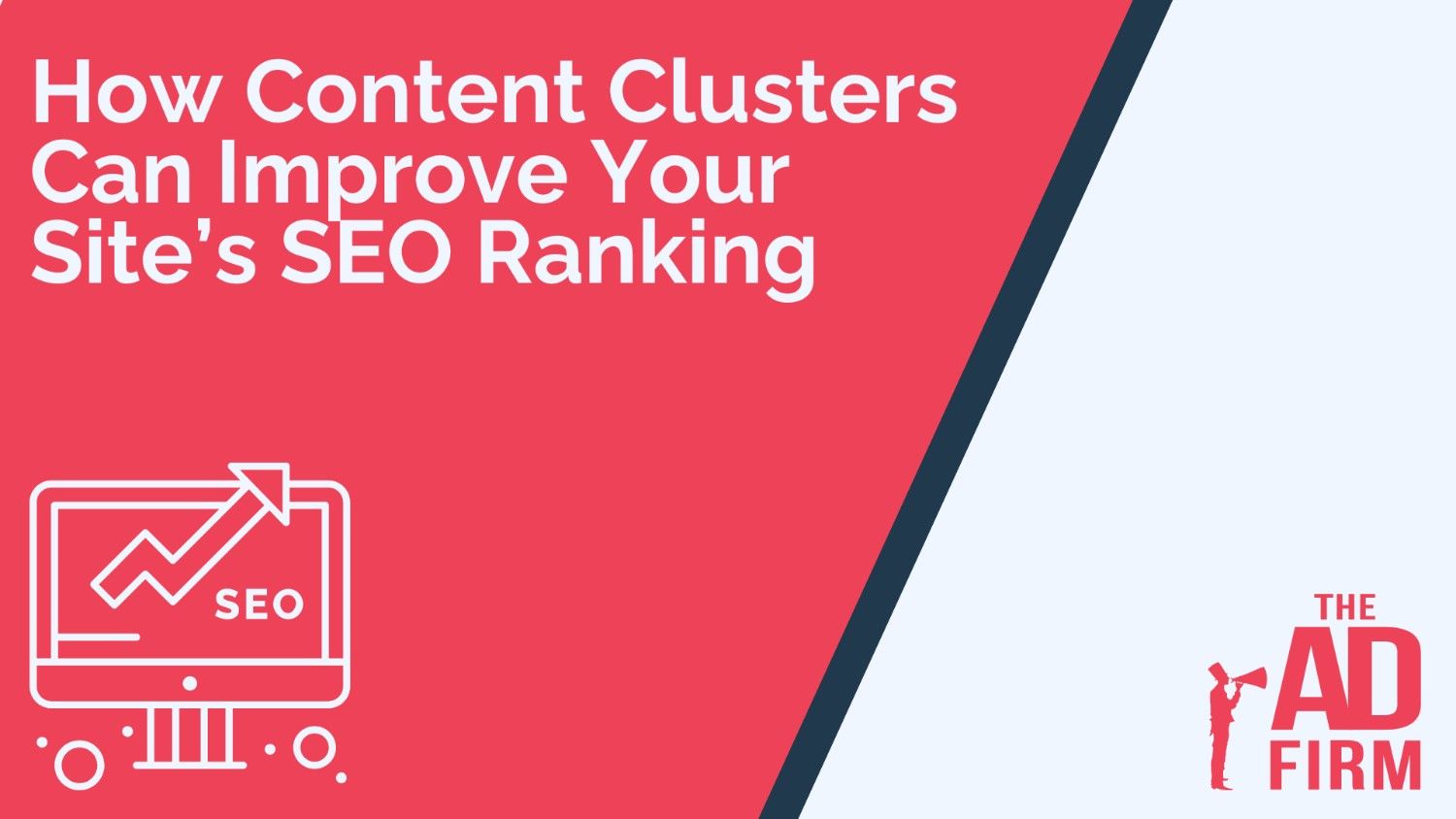Achieving a high SEO ranking is vital for businesses, particularly in e-commerce. Many business owners struggle with challenges like maintaining competitiveness in search results and investing in ads that do not yield expected results. Such obstacles can hinder visibility and impact growth.
Content clusters provide an effective solution. This strategy lessens reliance on paid advertising and bolsters your online presence. Let’s look at this e-commerce SEO strategy and see how it can boost your efforts.
What Are Content Clusters?
Content clusters are a strategic approach to organizing website content around central topics and related subtopics. This method involves creating a “pillar” page that covers a broad subject comprehensively, with links to several “cluster” pages that delve into specific aspects of that topic.
This structure enhances the user experience by providing a clear pathway for visitors to explore related information while helping search engines understand the hierarchy and context of your content. By interlinking these pages, businesses can improve their site’s SEO performance, as search engines favor websites with well-organized, interconnected content.
Originally adopted by content marketers and SEO professionals in the mid-2010s, content clusters have gained traction as an effective way to improve organic search visibility. E-commerce businesses, in particular, utilize this strategy to enhance their online presence, engage customers, and drive conversions. With search engine algorithms continuously evolving to prioritize relevant, high-quality content, employing content clusters has become essential for brands looking to establish authority in their niches and effectively connect with their target audience.
How Content Clusters Strengthen Your SEO
Content clusters play a crucial role in strengthening your SEO strategy by providing a structured approach to content organization. This method not only enhances the user experience but also signals to search engines that your website is authoritative and relevant to specific topics. Here’s how they work:
- Improves Site Structure: Content clusters create a clear hierarchy that organizes information logically. This structure makes it easier for both users and search engines to navigate your website, helping search engines crawl and index your pages more effectively. A well-structured site enhances user engagement and reduces bounce rates, both of which are favorable for SEO.
- Enhances Keyword Targeting: By grouping related content, businesses can target a broader range of keywords within a specific topic. The pillar page can rank for broad keywords, while cluster pages can focus on long-tail keywords. This comprehensive approach allows your site to capture more search traffic, as it caters to various search intents related to the core topic.
- Establishing Authority: By consistently producing high-quality, interconnected content, your website can position itself as an authority in your niche. Search engines prioritize authoritative sites, and having a content cluster strategy demonstrates expertise in specific topics. This authority can lead to higher rankings in search results, ultimately driving more organic traffic and improving your overall SEO performance.
The Importance of Topic Authority in SEO

Topic authority is a critical factor in SEO that refers to a website’s credibility and expertise on specific subjects. Search engines, particularly Google, prioritize content that demonstrates depth and relevance, rewarding sites that provide comprehensive, well-researched information.
Establishing topic authority involves consistently producing high-quality content that addresses various aspects of a subject. This approach not only satisfies user intent but also positions the website as a trusted source of information.
Effective Strategies for Building Topic Authority
To establish topic authority, consider the following strategies:
- Create Content Clusters: Organize your content around core topics and related subtopics. This structure helps search engines understand the context of your content and reinforces your expertise.
- Consistent Content Creation: Regularly produce high-quality, well-researched articles that cover various aspects of your chosen topics.
- Encourage Backlinks: Authoritative content is more likely to earn backlinks from other reputable sources, which further boosts your SEO performance.
Building Effective Content Clusters for Your Website
Creating effective content clusters involves a strategic approach to organizing your website’s content around specific topics. This structure enhances SEO, improves user experience, and establishes your authority in your niche. Here are five steps to build content clusters that will optimize your website’s performance:
- Identify Core Topics: Start by determining the primary subjects relevant to your business and audience. Conduct keyword research to identify high-volume search terms and related subtopics. These core topics should reflect the main themes of your website and align with your target audience’s interests.
- Develop Pillar Pages: Create comprehensive pillar pages that serve as the central hub for each core topic. These pages should cover the topic broadly and provide valuable insights, statistics, and links to related cluster content. Aim for a length of at least 1,500 words to ensure depth and thoroughness. The pillar page should act as an authoritative resource, guiding readers to explore more specific aspects of the topic.
- Optimize for SEO: Implement on-page SEO best practices for both pillar and cluster content. This includes using relevant keywords, optimizing meta tags, creating engaging headers, and ensuring that images are properly tagged. Additionally, focus on crafting high-quality, informative content that addresses user intent, as search engines reward websites that prioritize user satisfaction.
- Promote and Update: Once your content clusters are live, promote them through various channels such as social media, newsletters, and partnerships with other websites. Monitor the performance of your cluster content using analytics tools to identify areas for improvement. Regularly update your pillar and cluster pages to keep the information current, relevant, and engaging for your audience.
Internal Linking and Its Role in Content Clusters

Internal linking is a fundamental aspect of content clusters that enhances SEO and improves user experience. By strategically linking related content within your website, you can create a cohesive structure that benefits both search engines and visitors. Here are five key roles internal linking plays in optimizing content clusters:
- Enhances Navigation: It guide users through your website, making it easier for them to discover related content. By connecting pillar pages to cluster articles, you create a logical flow of information. This seamless navigation encourages visitors to explore multiple pages, increasing their time on site and engagement.
- Distributes Page Authority: When you link from one page to another, you pass some of the authority from the source page to the destination page. This distribution of link equity helps improve the search visibility of your cluster content. By linking to related articles from a high-authority pillar page, you can enhance the SEO performance of lower-ranking pages within the cluster.
- Strengthens Topic Relevance: Internal linking reinforces the relationship between different pieces of content within a cluster. By linking relevant cluster articles to a central pillar page, you signal to search engines that these pages are interconnected and relevant to the same topic. This relevance helps search engines understand your site’s content structure and improves the likelihood of ranking higher for related queries.
- Encourages Content Discoverability: It also ensures that all parts of your content cluster are easily accessible. If users can quickly navigate to cluster pages from the pillar page and vice versa, they are more likely to engage with all related content. This increased discoverability can lead to higher click-through rates and better overall performance for your content.
- Facilitates SEO Tracking and Optimization: Internal links can help you monitor how users interact with your content clusters. By analyzing which links are clicked most often and how users move between pages, you can gain insights into user behavior and preferences. This information can inform future content strategies, allowing you to improve content relevance based on user engagement.
How Search Engines Value Content Clusters
Search engines prioritize content clusters because they improve contextual relevance and demonstrate expertise. By organizing related articles around a central pillar topic, websites clearly convey their authority on specific subjects. This comprehensive approach helps search engines understand the relationship between content pieces, making it easier to deliver relevant results to users and enhance overall rankings.
Moreover, content clusters facilitate a better user experience. When users navigate seamlessly between related articles, it signals to search engines that the website effectively meets user needs. This engagement can lead to improved indexing and visibility in search results, ultimately driving more organic traffic and establishing the site as a reliable source of information.
Common Mistakes to Avoid When Creating Content Clusters
Creating effective content clusters can significantly enhance your SEO strategy, but there are common pitfalls that can undermine their effectiveness. Avoiding these mistakes will ensure that your content clusters deliver the desired results.
- Lack of Clear Structure: One major mistake is failing to establish a clear structure for your content clusters. Without a well-defined hierarchy, users and search engines may struggle to understand the relationships between your pillar and cluster content. For example, if a pillar page on “Digital Marketing” doesn’t clearly link to subtopics like “SEO” or “Social Media Marketing,” visitors may miss valuable related information, leading to higher bounce rates.
- Inconsistent Content Quality: Another error is maintaining inconsistent quality across cluster articles. When some articles are well-researched and engaging while others are poorly written or lacking in detail, it can diminish the overall credibility of your content cluster. For instance, if a pillar page on “Home Improvement” links to a cluster article that is poorly formatted or filled with inaccuracies, it can negatively impact user trust and your website’s authority.
- Focusing Solely on Quantity: A common mistake is prioritizing the quantity of content over quality. While having multiple cluster articles can be beneficial, producing a high volume of low-quality content can dilute your brand and fail to engage your audience. For example, creating numerous short articles that barely touch on various subtopics may not provide the comprehensive insights users are looking for, leading to missed opportunities for traffic and engagement.
- Ignoring User Intent: Another mistake is not aligning your content clusters with user intent. If your pillar and cluster topics do not address the questions or needs of your target audience, you may fail to attract and retain visitors. For instance, if your pillar page is about “Travel Tips” but your cluster articles focus on unrelated topics like “Cooking Techniques,” it may confuse users and result in a disconnect between your content and their expectations.
- Lack of Promotion: Finally, failing to promote your content clusters can lead to low visibility. Simply publishing your content does not guarantee your target audience will see it. For example, if you create a comprehensive pillar page on “Fitness Strategies” but do not share it on social media or through email marketing, you may miss valuable traffic and engagement opportunities.
Why Content Clusters Are Here to Stay

The digital marketing landscape is shifting toward a more user-centric approach. There is an increasing demand for content that addresses specific queries and provides comprehensive insights. Businesses that adopt content clusters will gain a competitive edge by:
- Addressing User Intent: Content clusters allow you to create detailed articles that answer specific questions, aligning with what users are searching for.
- Long-Term Value: Investing in organized content structures will yield sustained SEO benefits, leading to increased organic traffic over time.
- Enhanced Brand Trust: By consistently providing valuable information, businesses can strengthen their brand’s reputation and foster customer loyalty.
At The Ad Firm, we recognize the importance of integrating content clusters into your SEO strategy. As a leading e-commerce SEO company, we specialize in helping businesses optimize their online presence through tailored content strategies. Our team is dedicated to developing effective content clusters that enhance search engine visibility and engage your target audience.
Do you want to elevate your e-commerce business? Contact The Ad Firm today to learn how we can help you build a robust content strategy that positions your brand for sustained growth and success in the digital landscape.









